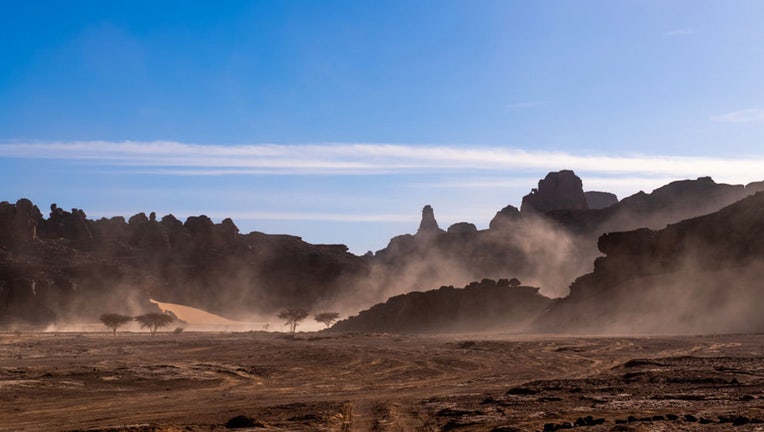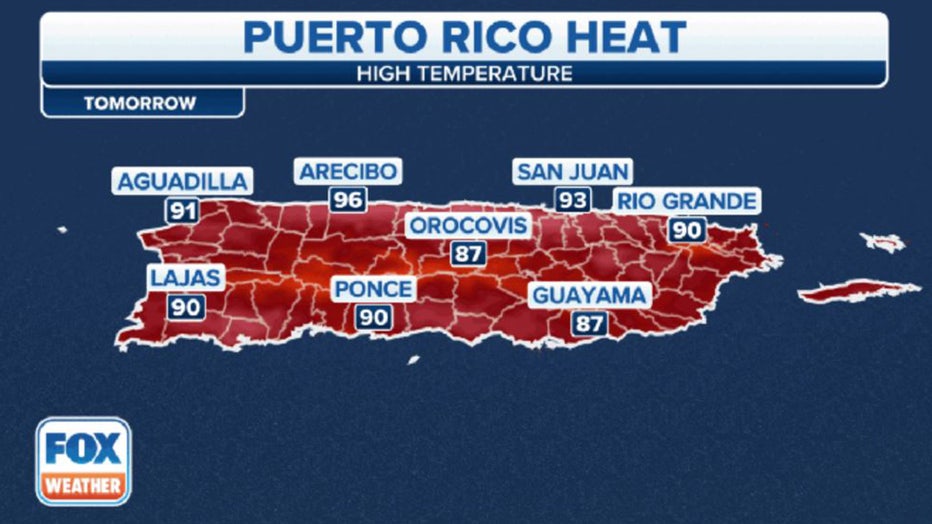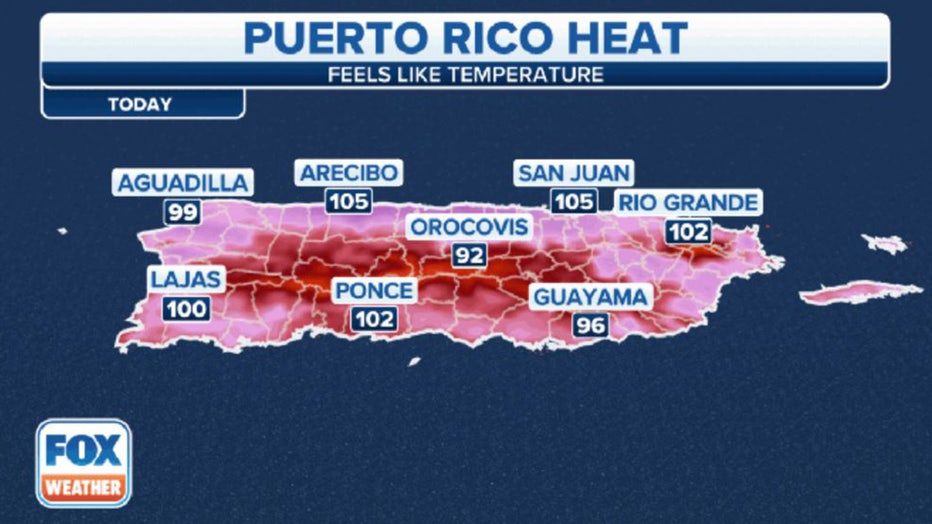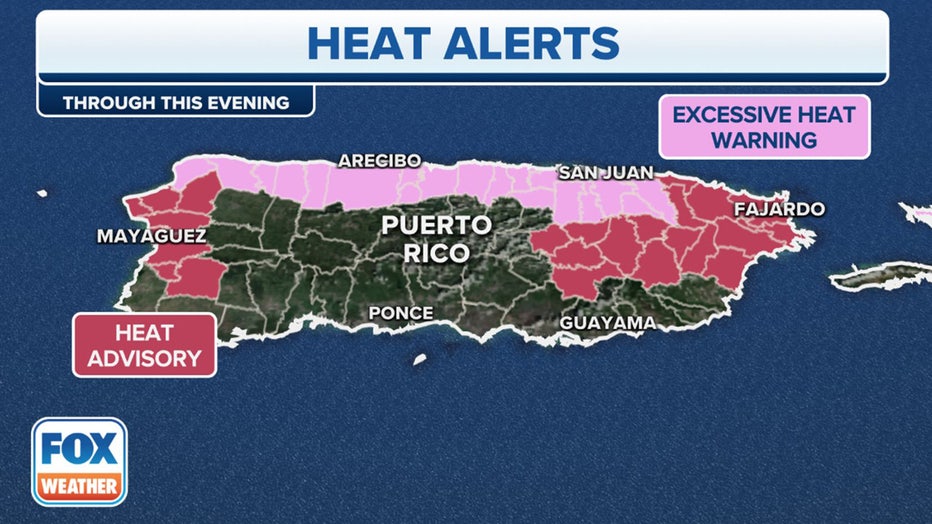Saharan dust over Puerto Rico fueling potentially deadly heat with feels-like temps of 120 degrees possible

FILE - Rocks and sand dunes in windy Sahara desert, Tassili N'Ajjer National Park, Tadrart Rouge, Algeria on Dec. 31, 2022, in Tadrart Rouge, Algeria. (Eric Lafforgue/Art in All of Us/Corbis via Getty Images)
Dangerous and potentially deadly heat will plague the U.S. territory of Puerto Rico this week, thanks in part to plumes of Saharan dust that are blowing across the Atlantic Ocean from Africa.
"Very hot conditions will persist for the rest of the workweek across urban and coastal areas of the islands," the National Weather Service in San Juan warned. "The highest heat indices are once again expected for the northern municipalities of Puerto Rico and Culebra."
The NWS issued Excessive Heat Warnings and Heat Advisories across the northern half of the island that will remain in effect through at least Tuesday evening. However, the dangerous and deadly heat will persist over the next few days, so those alerts may be extended.
According to the NWS, low pressure to the north and a building area of high pressure to the east of Puerto Rico would maintain a southerly wind flow, pulling in the very hot and humid air.
In addition, drier air and Saharan dust will continue to gradually move over the region over the next few days, but the combination of high temperatures and humidity could lead to a heat index higher than 100 degrees and possibly as high as 120 degrees for the rest of the week.
Saharan dust contributing to the dangerous heat

Saharan dust will continue to blow across the Atlantic Ocean and Puerto Rico this week. (FOX Weather)
The Saharan dust is drying out the air over Puerto Rico, preventing clouds from forming to help block some of the sun’s dangerous rays. This is allowing temperatures to rise significantly during the afternoon hours across the island.
"That radiation from the ground as the surface begins to heat up, that sand loves that, and it absorbs all of the heat," said FOX Weather meteorologist Stephen Morgan.
Morgan said that is why we’re seeing some of those extreme daytime temperatures, but the Saharan dust is also preventing temperatures from falling overnight.
"(The sand) is acting like a blanket. It’s like clouds that we see sometimes in the evening keeping those temperatures warmer," he said.
Potentially deadly heat expected in Puerto Rico this week

Forecast high temperatures in Puerto Rico through Thursday. (FOX Weather)
Temperatures are expected to remain in the mid- to upper 90s across the northern half of Puerto Rico for the rest of the week.
"(Monday), the high temperature in San Juan was 94 degrees," Morgan said. "The record was 97 degrees. That does speak to these temperatures, just not able to climb as much because it’s so humid. But we could break records today on top of this excessive heat that we’re dealing with."

The feels-like temperature in Puerto Rico through Thursday. (FOX Weather)
However, it will feel much hotter than the mid- to upper 90s predicted for Puerto Rico through Thursday.
The heat and humidity will make it feel well over 100 degrees. Some areas, in fact, could have heat indices reaching up to 120 degrees, according to the NWS.
HEAT KILLS MORE AMERICANS THAN FLOODING, TORNADOES, HURRICANES OR LIGHTNING
Heat could turn deadly in Puerto Rico

Heat alerts in effect in Puerto Rico. (FOX Weather)
A majority of Puerto Rico is under a heat alert, including Excessive Heat Warnings that stretch across the northern coast of the island territory.
The NWS said the prolonged periods of hot temperatures and high humidity would push heat indices to between 112 and 118 degrees across northwestern Puerto Rico to San Juan and the surrounding areas.
Heat Advisories are also in effect across western and eastern portions of the island, with heat indices expected to reach upwards of 110 degrees, according to the NWS.
This extreme heat could lead to heatstroke or heat exhaustion, so officials are urging people to exercise caution and limit time outdoors if possible.
HOW TO TELL THE DIFFERENCE BETWEEN HEAT EXHAUSTION AND HEATSTROKE
More Americans are killed by heat than any other type of extreme weather.
According to statistics compiled by NOAA, heat has claimed an average of 158 lives in the U.S. each year based on the most recent 30-year period from 1992 to 2021. That far outpaces the average number of people killed annually by floods (88), tornadoes (71), hurricanes (45) and lightning (37).

